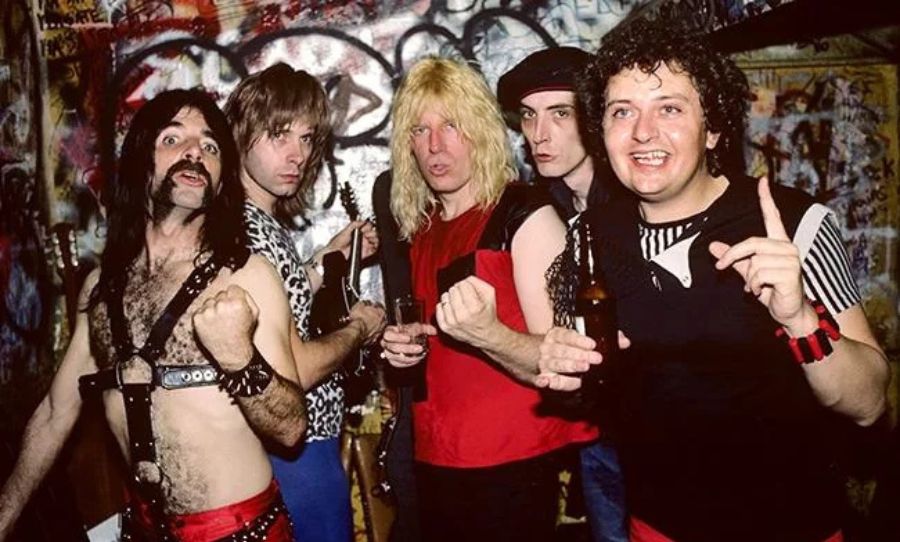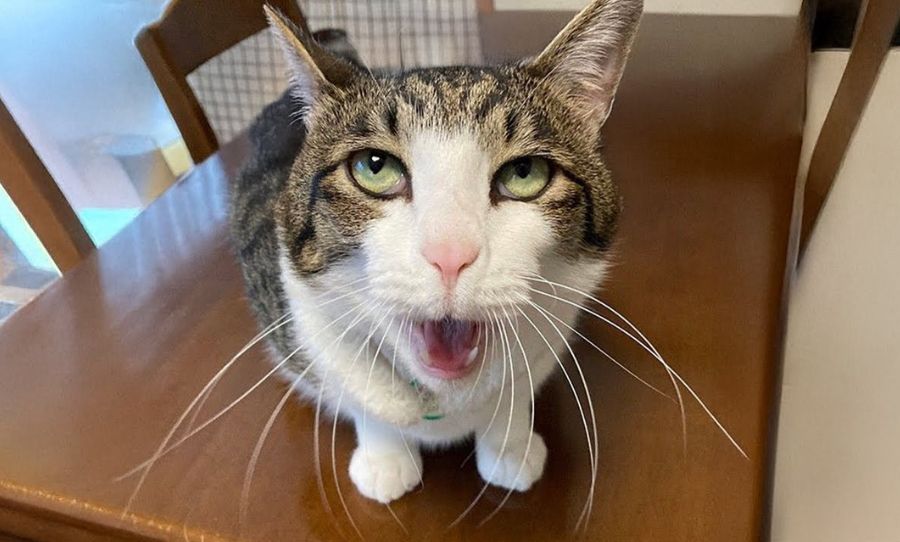Jungle have unleashed their third masterpiece, Loving In Stereo, tapping on the nerve of undeniable energy and freedom.
Three years after the release of their second album, For Ever, comes Jungle’s Loving In Stereo – fourteen tracks of bursting serotonin and colour.
After deciding to move from the commercial pressures of the music industry, producers Josh Lloyd-Watson and Tom McFarland piece together a fearless stained glass of neo-soul and groove under their own label, painting the album on pure instinct and imagination. Jungle bleeds beyond the lines of genre as the duo spark a cathartic sound of running forward, and not looking back.
To celebrate the milestone, Happy Mag caught up with Tom McFarland to talk blind faith, his new child, and more.

TOM: All right, Jasmine, how you doing?
HAPPY: Great Tom, how are you?
TOM: I am tired but that’s all OK.
HAPPY: Is it early where you are?
TOM: Yeah, yeah it’s 8am and I also have a seven-week-old baby.
HAPPY: Oh my gosh congratulations, that’s amazing!
TOM: This is my life right now.
HAPPY: Is it a boy or girl?
TOM: It’s a little girl and she’s got like a cute shirt like this [shows shirt] to wear.
HAPPY: That is so cute.
TOM: Thank you very much.
HAPPY: So you’d be in a happy little bubble right now.
TOM: Yeah a very happy and very tired little bubble.
HAPPY: Sorry, I’ll make it really quick for you then.
TOM: No, don’t worry. I’m good, I’ve got a coffee so I’m fine.
HAPPY: Oh good! Firstly, congratulations on the album. I had to listen to it this morning. It’s unbelievable, it’s so good.
TOM: Thank you. Thank you very much, really appreciate that.
HAPPY: No worries, what was the mission statement when you guys were making the album?
TOM: Well, we had finished it at the end of 2019 actually so we were kind of sitting around for a long time, tweaking bits here and there. I mean, ultimately, it’s just a really competent record and I think sonically, we’ve sort of finally achieved all of the things that we had in our heads, you know?
I mean, like on the first two records you have these grand ideas of how you want something to sound, but you don’t necessarily have the right methods to sort of realise that vision on a record, and it feels like this is the first record where we’ve really, really nailed exactly how we wanted everything to sound in our heads on the page. And yeah, just not having any questions about what we’re doing.
Just going full steam ahead and a bit of blind confidence and faith, really, you know the ideas are sort of really raw and fresh and undeveloped in a way because we kind of felt like sometimes that process can suck the life out of a lot of it. Hopefully that’s what you hear on the record.
HAPPY: You mentioned that this was the first album that honed in on an easy-to-make music method. What kind of method are you talking about there?
TOM: Essentially that’s it, just like not overthinking it and not trying to do things quickly. You can spend a lot of time in the studio essentially doing nothing, so it’s about picking the times to be in the studio rather than being in there the whole time, seeing and overanalysing everything. Yeah, I guess just understanding when you have an idea that’s good and learning to love that from an early stage.
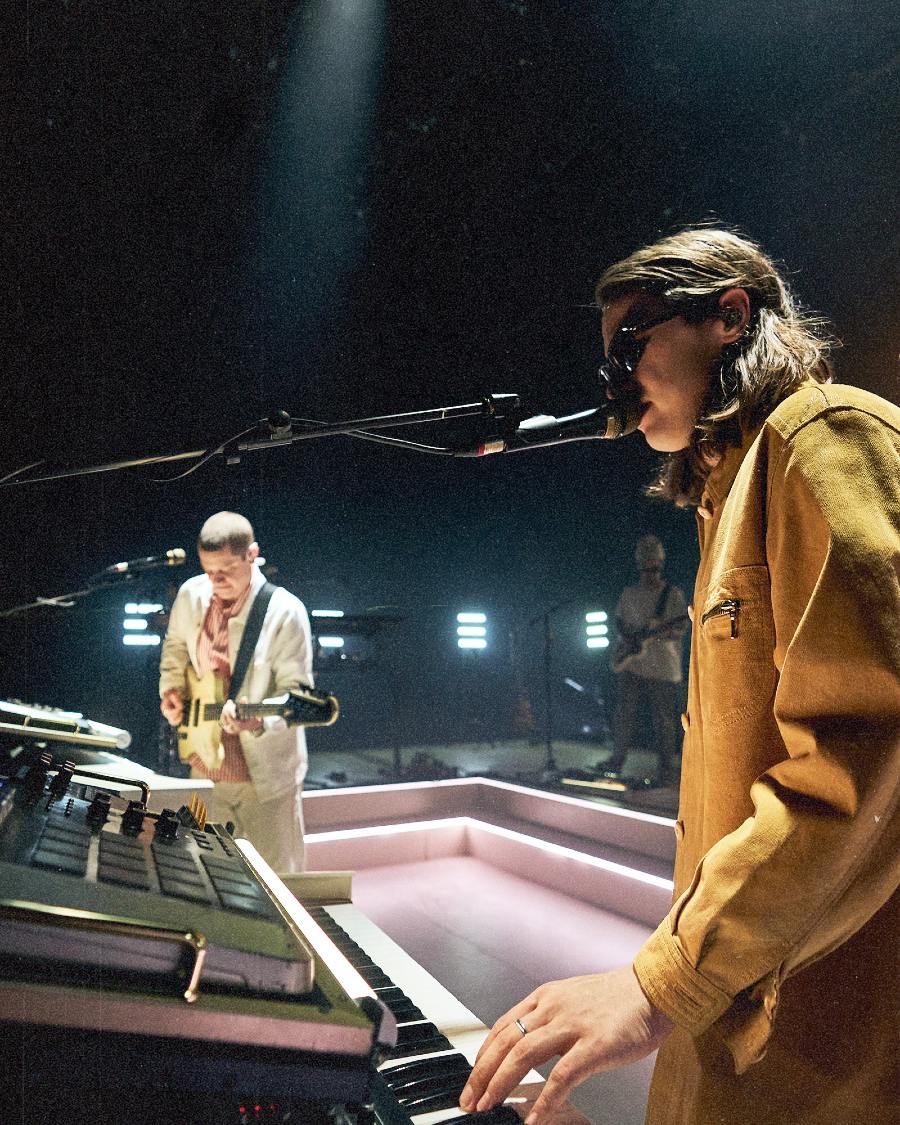
HAPPY: Do you think that kind of confidence and working off your instincts has come with experience, or just making the decision to trust them?
TOM: Oh look, definitely a little bit of both. We’re like seven or eight years older than we were when we made our first record now. So yeah, you pick up new techniques. You pick up new equipment and you learn to make better sounds in the studio and you learn to kind of capture the essence of something a little bit better when it starts. The idea is the most important thing to us now, above anything else.
HAPPY: I read somewhere that you and Josh steered clear of any commercial pressure with this album. What made you want to jump into that decision? And why was it different from the past albums?
TOM: I think we went a slightly easier route in making the music. Just having the confidence in yourself as it is a great thing like not second-guessing yourself, not asking yourself too many questions is a wonderful place to be as a creative person because you just allow your most original ideas to come to the top of the pile.
HAPPY: How awesome. So during the recording of the album you had an open invitation for a lot of your friends to get involved. How is that heard in the record?
TOM: So at the end of 2019, we sort of put together a choir from friends and colleagues and people that we work with. My cousin was involved, Josh’s cousin was involved, and then we got down to a big studio in North London. I think some of the vocal ideas that we’d been writing for the record really felt like they just needed more voices, more power. Again, it’s one of those things where we had something, we had a vision of it in our heads, and we knew that in order to achieve that we needed to have more voices on it.
We needed to have strings, we needed to have brass, we needed to open ourselves up to collaborating with people because I think we got quite obsessed on the second record, especially with Jungle being about us and our voices and I think actually, if we took ourselves out of that and went back to sort of the original mantra, it’s like Jungle is the most important thing right? Like the name, the logo, the art that is created, you know that’s the most important thing rather than like our egos and so I think this is almost like a process of like even further removing our egos away from it and allowing other peoples’ voices to represent what we do.
HAPPY: What would you say the mantra of Jungle is?
TOM: I mean, there’s loads. Don’t think about it too much. That’s one of the main ones. And try not to think about making art, because as soon as you think about it, it becomes formulaic and stagnant.
HAPPY: Does it ever get easier to not think about it too much?
TOM: Yeah, definitely. I think we’ve definitely sort of gone and found that creative, zen place now. And I think moving forward we’ll probably make records quicker and feel more free and confident doing that as well.
HAPPY: Do you think part of the reason this process became a lot easier was because you worked under your own label?
TOM: I definitely think that added to the confidence factor definitely, you just have less people asking questions, and less people questioning things. As much as record labels are great, there is always still someone going; “well like, do we need another a single? Is that the right thing to be doing in terms of the videos and the marketing?” and you’re like, “of course it is because that’s our idea, and that’s our business”. But as soon as someone puts the seed of doubt in your mind, your whole process just gets pushed back a few weeks and months.
At the end of the day, those guys sitting behind their desks at record labels, they’ve never made records before, like what do they know about us, who are they to be giving me advice about my artistic output?
HAPPY: And the first album was such a success like in 2014, and that was all you guys!
TOM: Yeah for sure. If it definitely feels like we, sort of, like regressed in a good way, but also progressed as a result of that.
HAPPY: So like you were saying, the lessons that you learned from the second album, what’s probably the biggest thing you would have changed, or that you have done differently?
TOM: The second record felt like we were a bit scared of creating something because you know, the first record had unbelievable success in our eyes, do you know what I mean? We were just so shocked at how well that album did, and I guess when it comes to making the second album you’re like, “do we like stick or twist?” you know?
It’s like playing poker or blackjack, stick or twist, you just don’t know, and I think we were just both in quite emotionally fragile places, potentially making that record, and that shows you a much more introspective album. It’s a bit slower. I mean obviously, we love it, but it feels like something that we wanted to move on from quite quickly in terms of artistic output and yeah, this third record is definitely a reaction against that. It gave us the confidence in ourselves to really leave all our demons at the door when going into the studio this time.
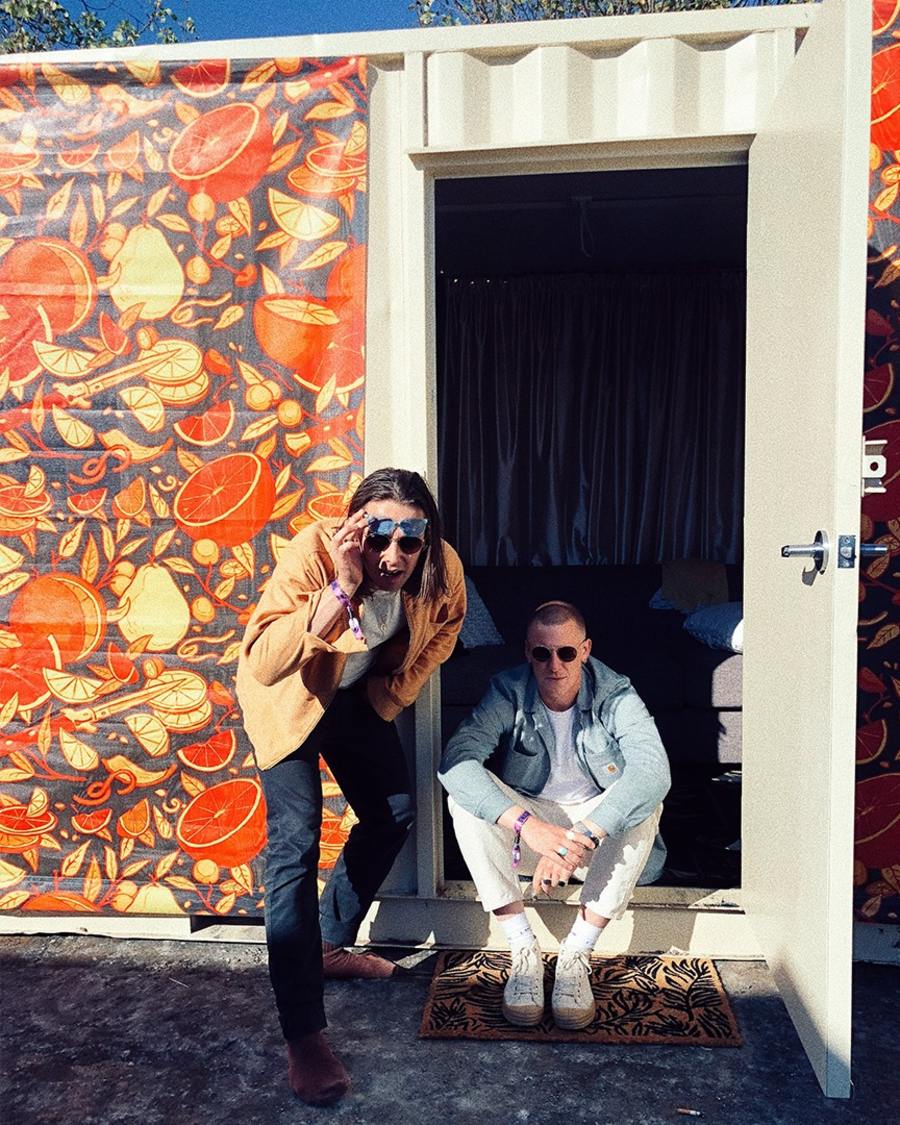
HAPPY: Well you can definitely feel that freedom on the album as soon as the first song plays, it just feels like a euphoric rocket ship cracking open (laughs). You guys should be seriously proud of yourselves, it’s incredible.
TOM: Thank you very much.
HAPPY: So the singles that you’ve already released; Keep Moving and Talk About It, what made you want to put these ones forward ahead of the release?
TOM: I think you just sort of know when you have written a song that’s gonna connect with a lot of people and they tend to be the most simple ideas. The most simple hooks are kind of the most universally understood ideas. They’re both very positive mantras.
You can read a lot of different things into them. I think for us it’s important to write songs that can mean multiple things to multiple people. We don’t want to make things too like black and white. I think having grey areas in our lyrics is really important to us because you connect to more people, because as soon as you’re like “this is the story, this is what you’re meant to feel when you listen to this song”, you can alienate people that way. And you know, we’ve always come at it from an angle where it’s not necessarily about one person’s point of view.
It’s about a multi-view, like different people’s perspectives. You know that would naturally be the case because Josh and I are so inherently involved in the creation of all of it, there will always be at least two points of view on a record. So yeah, we’ve always just wanted to present a mantra that is told in a way that feels inclusive.
HAPPY: Absolutely, and it even shows in the music videos, which are so infatuating by the way. But I loved that you guys always have a real disco-funk sound, but the music videos show a real contemporary hip hop movement towards it. Was that an intentional decision or did you just let the dancers do their own thing?
TOM: Essentially, it’s just about letting those guys do what they do best. The two choreographers for this collection of videos were, well they are at the top of their game, they’re both like the hottest people in London right now in terms of choreography. And so we were quite lucky because of the pandemic, they weren’t on tour a lot of the time that whole cast would have been – in 2018 they were all out with Kylie Minogue.
Some of them were out with the Spice Girls doing their reunion tour as backing dancers, so these guys are like the top of their game in terms of commercial dancers in London, and just the fact that we were able to get them all in the same place for a week was just an opportunity we really couldn’t miss. So that’s why we set ourselves the challenge of recording while filming 14 videos in five days. So there’s a video for every track on the record now, which is again something.
HAPPY: Woah woah, so you recorded 14 in five days?
TOM: Yeah we shot 14 videos in five days.
HAPPY: What!
TOM: I know, I know. And then I had a child, so I just really haven’t slept since February basically.
HAPPY: Yeah you really have not slept, that’s insane (laughs).
TOM: It was a real challenge, but obviously when you set a crazy goal for yourself, and you have the right team around you to help you achieve that, then the results are always absolutely stunning. Like Talk About It, for instance, that was the end of a really long shoot day. It was the last one we were shooting. They were all really hungry. Some of them picked up injuries, like during rehearsals for that shoot, and you’ve got two or three hours to rehearse, do the camera moves, and then film.
So, that shot or take of Talk About It that you see on YouTube, you can really see that those guys are at their limit, they’re pissed off, but that energy is exactly what you need for it. The fact that we were able to push them to their limits and capture that amazing energy, it’s just something you can’t really pay for.
HAPPY: I’m so excited, that’s awesome. Do you think your sound influences the movements and the dance culture at the moment? Or it’s the other way around that dance culture impacts your sound?
TOM: I’m not sure. I think it’s probably a little bit both. A lot of those dancers, you know, just dance to hip hop because that’s what they do. And so when they’re faced with slightly different propositions in terms of the music and the tempo, and that probably pushes them out of their comfort zone a little bit, and they’re forced to adapt. Similarly, we don’t want to just do you know, like classic disco.
We want to represent the fact that we’re a band living in the 21st century, making modern music as well, because otherwise you’re just not going to connect with the new audience on that level.
HAPPY: Yeah absolutely. There is this whole cinematic experience to Jungle; it’s immersive and you can actually feel the music. I just wanted to know how you’re planning on capturing that vibe when you perform online for Splendour XR?
TOM: We don’t know yet.
HAPPY: You got some time.
TOM: (laughs), Well, yeah, we’re filming it pretty soon and I think ultimately like it’s just about representing the songs in a really good way. We’ve got some new musicians on stage with us this time, so they’ve got an amazing feel, an amazing groove. We got some lights into a room and hopefully, you know, Charlie, the guy that helps us direct the music videos is going to come down and help direct the shoot.
Hopefully, they’ll be a little bit of that energy in there as well in terms of how the cameras working around us, but you know that ultimately it’s about representing the songs in there, in a way that kind of that reaches out the screen and grabs people, it’s going to be a new experience for us. I don’t think performing to a camera is something that comes very naturally to us at all. I think we’ve always craved that interaction with people in a room, and often your performance is dictated by the feeling and the energy in an auditorium. So it’ll be interesting. We’ll see, I’m sure, we’ll have to smash it, but I’ll let you decide.
HAPPY: I’m sure you will too. I’m looking forward to seeing it there, and if anyone can pull it off with you guys! I think that just about covers it, maybe you can have a quick nap before the day starts. I’m such a big fan, I saw you guys when you came to Sydney and Sziget, 2019.
TOM: Oh amazing, you should’ve come and seen the show at the Metro, that was amazing. My brother and sister-in-law were at that show because they live in Vietnam, and they travelled over when we came out that time.
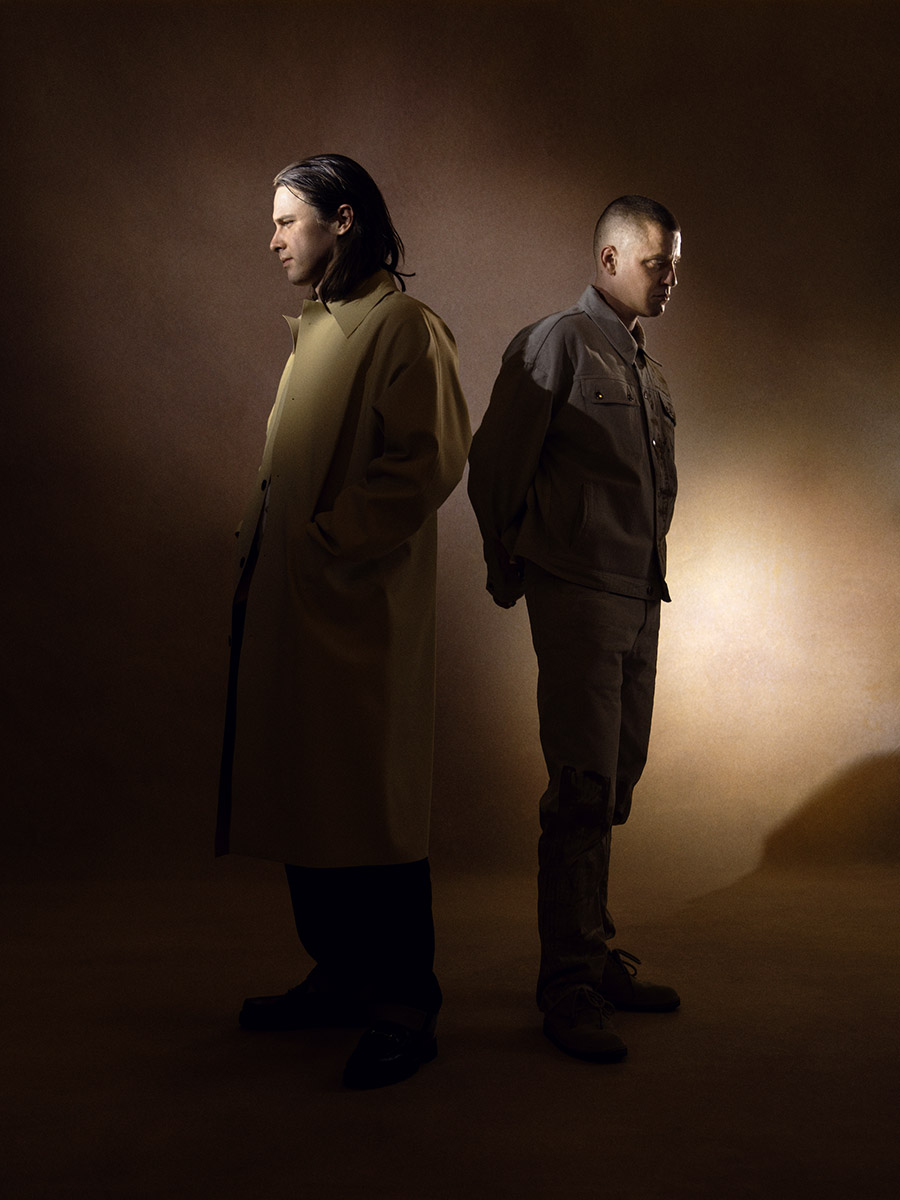
HAPPY: I don’t think I’ve ever jumped so high or danced that much in my whole life.
TOM: That was a super emotional show, that was pretty good. I really enjoyed that one.
HAPPY: The shows are unbelievable, that’s why I’m so intrigued with how you guys play out the live streaming.
TOM: Yeah, well, hopefully, we can satisfy your need for Jungle (laughs).
HAPPY: Of course, the music is already there, So, you guys will smash it!
TOM: Alright, well nice one Jasmine. Thanks very much for talking to you today.
HAPPY: Thank you very much. Congrats on the album and congrats on the baby.
TOM: Have a good day. See you soon.
Loving In Stereo is out now. Stream or purchase your copy here.
Interview by Jasmine Kassis
Photos by Filmawi (@Filmawi)

